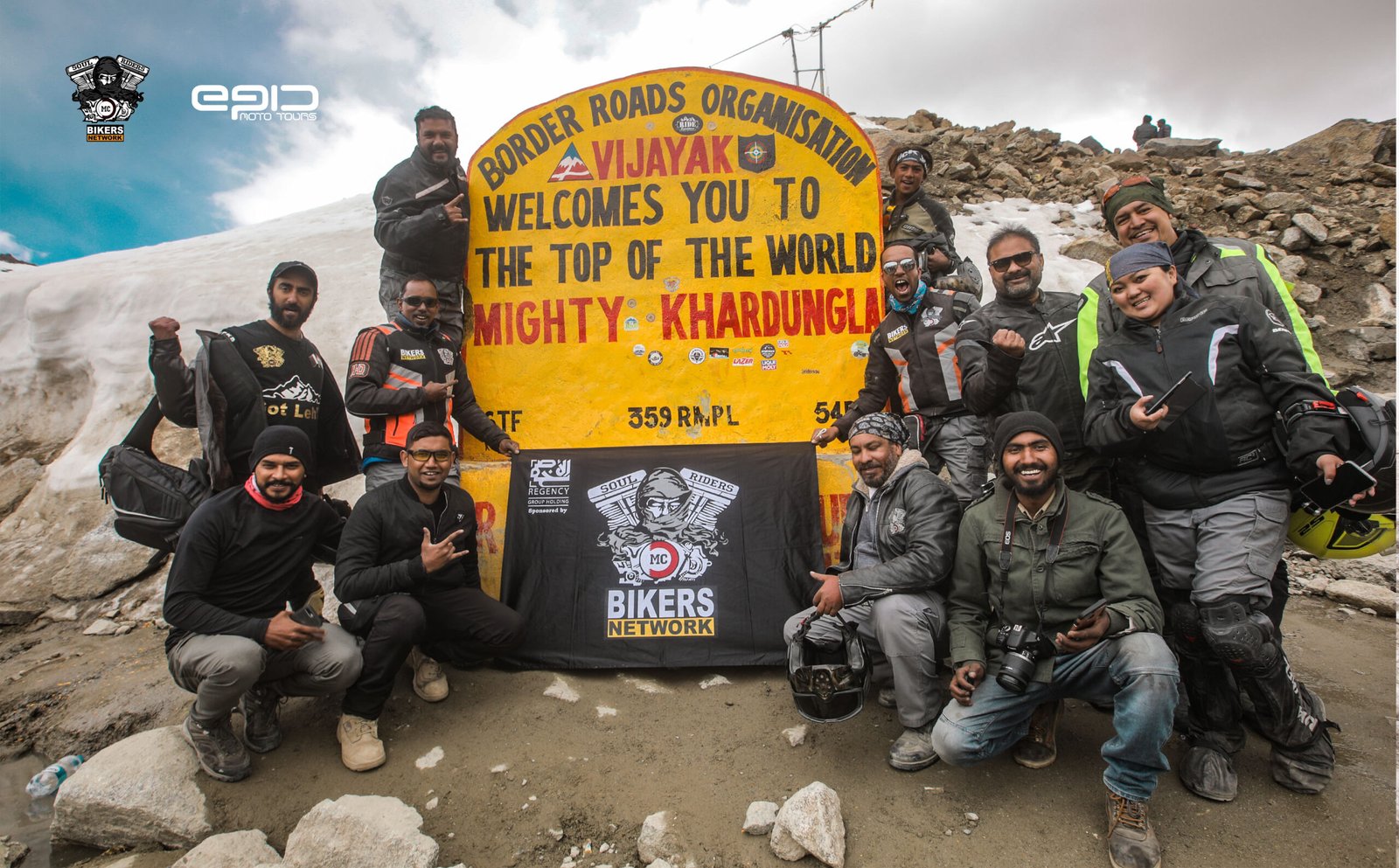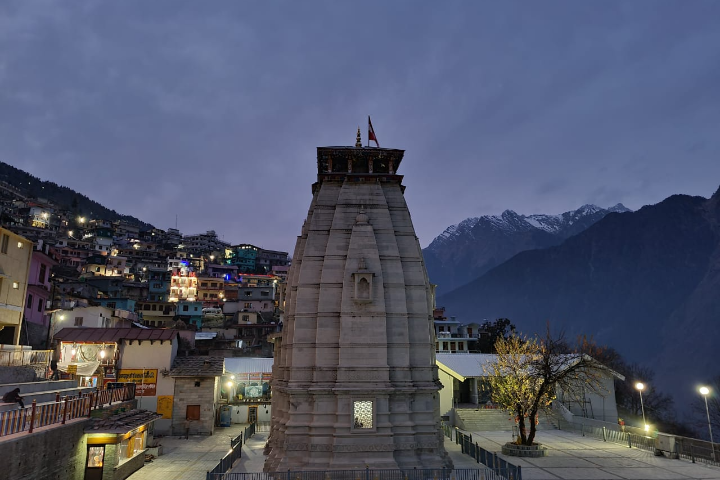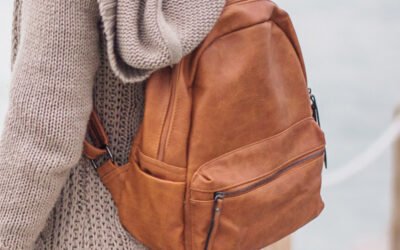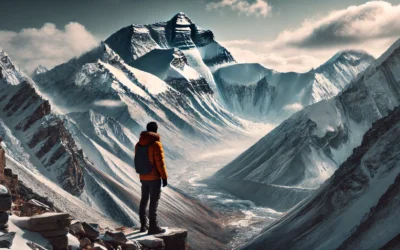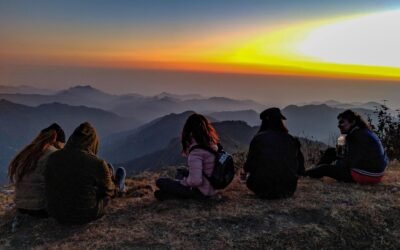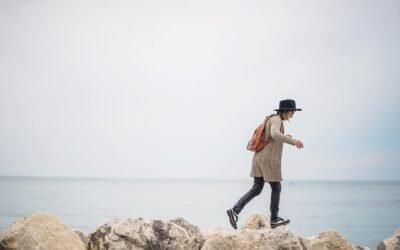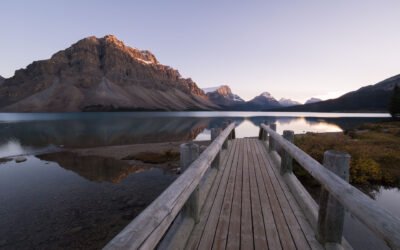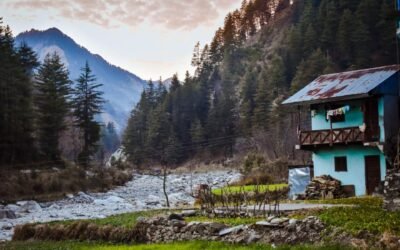Snow Ride Expedition
The 4×4 Snow Ride Expedition is an exhilarating 10-day journey designed for adventure seekers looking to conquer the snowy terrains of the Himalayas. Starting from the bustling capital city of Delhi, this expedition takes you through stunning landscapes, charming villages, and majestic mountain ranges. Experience the serenity of snow-clad peaks as you navigate through picturesque routes to iconic destinations like Sangla, Kalpa, and Kaza in the Spiti Valley.
With well-equipped 4×4 vehicles and the guidance of experienced drivers, this tour offers a unique blend of thrilling off-road experiences and cultural immersion in one of India’s most breathtaking regions.
Detail
Pickup & Drop
Category
Motorbike Tour
Duration
10 Days
Inclusions
Meals
Safe Travel
Stays
Flexible Cancellation
Transfers
Certified Captains
Bottled Water
24/7 Support

Overview
Short Itinerary
Day 1: Delhi to Shimla | Overnight Journey
Day 2: Shimla to Narkanda (70 Kilometers | 2.5 Hours Drive)
Day 3: Narkanda to Sangla (170 Kilometers | 6 Hours Drive)
Day 4: Sangla to Kalpa via Chitkul (90 Kilometers | 5 Hours Drive)
Day 5: Kalpa to Tabo (170 Kilometers | 6.5 Hours Drive)
Day 6: Tabo to Kaza (70 Kilometers | 3 Hours Drive)
Day 7: Spiti Sightseeing Day (Komic, Hikkim, Langza)
Day 8: Kaza to Kalpa (200 Kilometers | 7 Hours Drive)
Day 9: Kalpa to Shimla (222 Kilometers | 8 Hours Drive)
Day 10: Delhi Arrival | Tour Ends
The 4×4 Snow Ride Expedition is an exhilarating 10-day journey designed for adventure seekers looking to conquer the snowy terrains of the Himalayas. Starting from the bustling capital city of Delhi, this expedition takes you through stunning landscapes, charming villages, and majestic mountain ranges. Experience the serenity of snow-clad peaks as you navigate through picturesque routes to iconic destinations like Sangla, Kalpa, and Kaza in the Spiti Valley. With well-equipped 4×4 vehicles and the guidance of experienced drivers, this tour offers a unique blend of thrilling off-road experiences and cultural immersion in one of India’s most breathtaking regions.
Throughout the expedition, participants will have the opportunity to explore quaint villages, witness the traditional lifestyle of the locals, and indulge in local cuisine. The tour highlights include the scenic beauty of Chitkul, the breathtaking views from Komic, and the cultural richness of Tabo Monastery. With comfortable accommodations, expert guidance, and a well-planned itinerary, this snow ride expedition promises unforgettable memories and the adventure of a lifetime.
Gallery
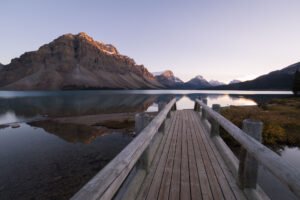
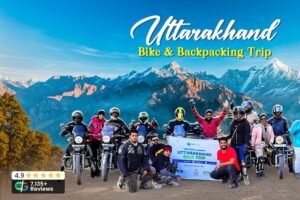

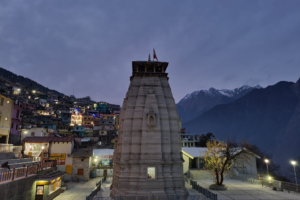


Itinerary
Day 1: Arrival in Delhi
- Welcome: Upon arrival at Indira Gandhi International Airport, you will be warmly greeted by our representative and escorted to your hotel.
- Rest: Enjoy a restful night in Delhi to prepare for the adventure ahead.
Day 2: Delhi to Rudrapur (Approx. 250 km)
- Morning Ride: After a hearty breakfast, meet your fellow riders and embark on your journey to Rudrapur.
- Arrival: Check into your hotel and relax for the evening.
Day 3: Rudrapur to Mahendranagar (Approx. 140 km)
- Scenic Journey: Following breakfast, set off for Mahendranagar, passing through Tanakpur.
- Border Crossing: Complete necessary border formalities to enter Nepal. Overnight stay in Mahendranagar.
Day 4: Mahendranagar to Bardia (Approx. 100 km)
- National Park Adventure: After breakfast, ride to Bardia, home to Bardia National Park, known for its diverse wildlife.
- Jeep Safari: Enjoy a thrilling jungle jeep safari in the afternoon. Overnight stay in Bardia.
Day 5: Bardia to Tansen (Approx. 140 km)
- Cultural Exploration: Post breakfast, ride to Tansen, the administrative center of Palpa district. Overnight stay in Tansen.
Day 6: Tansen to Pokhara (Approx. 180 km)
- Metropolitan Experience: Continue your journey to Pokhara, the tourism capital of Nepal.
- Sightseeing: Visit Phewa Lake, Gurkha Memorial Museum, and World Peace Pagoda. Overnight stay in Pokhara.
Day 7: Pokhara to Tatopani (Approx. 100 km)
- Relaxing Ride: Following breakfast, ride to Tatopani, known for its hot springs. Overnight stay in Tatopani.
Day 8: Tatopani to Jomsom (Approx. 50 km)
- Mountain Gateway: After breakfast, ride to Jomsom, the main gateway to Upper Mustang.
- Overnight Stay: Enjoy the unique atmosphere at this high-altitude town.
Day 9: Jomsom to Muktinath and Return to Jomsom (Approx. 40 km each way)
- Sacred Visit: Post breakfast, ride to Muktinath Temple, a revered site for Hindus and Buddhists at an altitude of 3,800 meters.
- Return: Ride back to Jomsom for an overnight stay.
Day 10: Jomsom to Pokhara (Approx. 180 km)
- Return Journey: After breakfast, ride back to Pokhara. Overnight stay in Pokhara.
Day 11: Pokhara to Chitwan (Approx. 150 km)
- National Park Experience: Ride to Chitwan, known for its wildlife.
- Jeep Safari: Enjoy an afternoon jeep safari in Chitwan National Park. Overnight stay in Chitwan.
Day 12: Chitwan to Kathmandu (Approx. 160 km)
- Cultural Capital: After breakfast, ride to Kathmandu, the historical and artistic heart of Nepal.
- Overnight Stay: Enjoy the vibrant atmosphere of the city.
Day 13: Exploring Kathmandu
- Sightseeing: After breakfast, visit the Kumari Temple and Durbar Square, followed by exploring the bustling Thamel market.
- Overnight Stay: Relax in Kathmandu.
Day 14: Kathmandu to Delhi and Departure
- Farewell Ride: After breakfast, transfer to Tribhuvan International Airport for your flight to Delhi.
- Return Flight: Connect to your international flight back home.
Inclusions & Exclusions
| Inclusions | Exclusions |
| Accommodation: Twin-sharing basis with breakfast and dinner. | Meals: Any beverages, lunch, and tips. |
| Motorbike Rental: One Royal Enfield 411cc per rider. | Unexpected Costs: Any costs due to force majeure. |
| Support: Backup vehicle with mechanic, basic spare parts, and medical kit. | Non-Itinerary Travel: Any travel outside the itinerary. |
| Road Captain: Professional guide on their own bike. | Personal Expenses: Anything not mentioned in inclusions. |
| Permits & Fees: All tolls, taxes, and permits. | |
| Fuel: Coverage for the entire journey. | |
| Refreshments: Bottled water throughout the tour. |
Pricing
- Per Rider: ₹1,49,999
- Pillion Rider: ₹80,000
- Single Occupancy Supplement: ₹40,000
FAQs
1. What type of vehicle will be used for the Spiti Winter Ride?
For the Spiti Winter Ride, we use reliable 4×4 vehicles that are specially equipped for challenging terrain and extreme winter conditions. The vehicles are well-maintained and fitted with necessary modifications to handle snow, ice, and rocky roads typical of the Spiti Valley in winter. You’ll be riding in comfort, with ample space and safety features, making the journey both thrilling and secure.
2. Are any permits required for the Spiti Winter Ride?
Yes, permits are required for certain regions in the Spiti Valley, particularly because it is a border area with some restricted zones. To ensure that your journey is smooth and legal, we handle all the necessary paperwork and permits for you. Here’s a breakdown of the permits you will need:
- Inner Line Permit (ILP):
The Inner Line Permit is required for visiting specific areas in Himachal Pradesh, including parts of the Spiti Valley. These areas are near the border with Tibet and are considered sensitive, so the government requires permission for non-residents to enter. The ILP is typically required for Kaza, Tabo, and Dhankar, among other regions in Spiti.- The ILP is easy to obtain and can be arranged through us before the tour begins. We handle all documentation, so you don’t need to worry about applying for it yourself.
- Protected Area Permit (PAP):
If your itinerary takes you near the Indo-China border, particularly around areas like Nako, Chicham, or Sumdo, you will require a Protected Area Permit (PAP). The PAP is also a requirement for foreign nationals, and it allows you to travel through certain protected or restricted zones in Spiti.- This permit needs to be requested in advance and must be processed for each traveler. We take care of the application for the PAP to ensure everything is in place well before the start of your journey.
- Wildlife Sanctuary Permits:
Some parts of the Spiti Valley are part of the Pin Valley National Park or Spiti Wildlife Sanctuary, which require special permission for entry. These permits are typically included when you apply for the ILP or PAP.- The rules and regulations around these areas are designed to protect the local wildlife and natural environment. While the park is not always directly on the main routes, if your itinerary involves these zones, we will ensure that the necessary permissions are obtained.
- Local Permits:
For certain remote areas or if you are traveling to specific trekking routes or scenic spots (such as the Chandratal Lake), additional local permits may be required. These are generally easy to obtain and are typically handled by local authorities or your guide.- Our team is familiar with these requirements and ensures that any additional local permits are obtained as part of the tour preparation.
How We Handle Permits:
- All permits are processed in advance: We take care of all the paperwork before the tour begins, meaning you don’t need to go through the hassle of applying for multiple permits. We require basic details such as passport information, visa details (if applicable), and your travel dates to process these permits.
- Documentation Required: For most of these permits, you’ll need to provide a copy of your government-issued ID (e.g., passport, Aadhaar card), along with any visa details if you are a foreign national. We collect this information in advance to ensure that your permits are ready for the trip.
- Timely Processing: We recommend booking the Spiti Winter Ride at least 2-3 weeks before the tour to allow enough time for the permit processing, especially during the peak winter months when requests may be higher.
By handling all the permits on your behalf, we ensure that your travel through Spiti is legal and hassle-free. This means you can focus on enjoying your adventure, knowing that all necessary permissions have been taken care of.
3. What accommodations are included?
During the Spiti Winter Ride, accommodations are chosen carefully to ensure a comfortable, warm, and authentic experience while also meeting the unique challenges of winter travel in the region. As temperatures can drop significantly in the winter months, particularly at night, all accommodations are selected for their ability to provide warmth and shelter from the cold while also offering a glimpse into the local culture and lifestyle.
Here’s a breakdown of what you can expect in terms of accommodations:
- Types of Accommodations:
- Guesthouses and Homestays:
The primary form of accommodation for this tour is guesthouses and homestays run by locals. These options allow you to immerse yourself in the culture and daily life of the Spiti Valley. The rooms are simple but cozy, with warm blankets and heating facilities to ensure you stay comfortable despite the cold weather. Staying in a homestay also offers a more personal experience, as you’ll get a chance to interact with the local people and enjoy home-cooked meals. - Small Lodges and Hotels:
In larger towns such as Kaza and Nako, you will stay in small lodges or hotels that are equipped to handle the winter season. These accommodations are basic but functional, with essential amenities such as comfortable beds, hot water, and heating. While they may not be luxury accommodations, they are carefully selected for their warmth, cleanliness, and comfort in the extreme winter conditions. - Twin or Tripple Sharing Accommodation:
- Twin-sharing rooms are the standard for this tour, which means two guests will share a room with separate beds (or a double bed, depending on availability). Twin-sharing accommodation is ideal for travelers looking to experience Spiti together with a fellow rider or friend, offering a comfortable environment to rest after a long day of travel.
- The rooms are equipped with basic furniture, including beds with warm bedding, side tables, and a small heater or electric blanket (depending on the availability at the guesthouse or hotel). The winter weather in Spiti can be quite cold, so these accommodations are focused on providing sufficient warmth and a good night’s rest.
- Single Occupancy (Optional):
- If you prefer single occupancy, this can be arranged for an additional cost, subject to availability. Single rooms offer more privacy and personal space during the trip, and they may be available in guesthouses or hotels that have the facilities to accommodate solo travelers.
- As accommodations in remote areas of Spiti are limited, single occupancy options are subject to room availability, so it’s recommended to inform us in advance if you prefer this arrangement.
- Heating and Warmth:
- Winter heating is a key consideration for accommodations during the Spiti Winter Ride. While the region does not have central heating in most places, guesthouses and hotels typically use room heaters, or wood-fired stoves to ensure warmth. In homestays, local families often use traditional methods like wood stoves or Bukhari heaters, which not only keep the rooms warm but also add to the authentic experience.
- We ensure that your rooms are comfortable enough to rest at night despite the cold outside. However, it is advisable to pack warm clothing, including thermal wear, as the rooms may still be chilly when you step out of bed.
- Basic Facilities and Amenities:
- The accommodations on the Spiti Winter Ride are basic, but they provide everything you need for a cozy and practical stay. Expect to have access to bathrooms with hot water (often available in the evening, as it’s heated by local methods), toiletries, and Wi-Fi (in select areas). However, keep in mind that in more remote regions, internet connectivity may be limited.
- You can expect a simple yet hearty breakfast and dinner included at the guesthouses or homestays. Meals are usually prepared using fresh, locally sourced ingredients, and you will have the chance to enjoy traditional Spitian dishes.
- Off-the-Grid Experience:
Some of the accommodations, especially in more remote locations like Pin Valley, may be off-the-grid with limited facilities. Here, simple guesthouses with basic facilities that are ideal for experiencing the raw beauty and solitude of the Spiti Valley in winter. In these locations, you’ll find a much more rustic experience, which is part of the adventure of traveling through such a unique region. - Local Culture and Hospitality:
One of the highlights of the Spiti Winter Ride is the chance to experience the warm hospitality of the locals. The guesthouses and homestays are run by families who are eager to share their culture, food, and traditions with visitors. The homes are typically warm and inviting, providing a chance to interact with locals and learn about their way of life in one of India’s most remote regions.
Summary:
- Accommodations are twin or Tripple sharing in guesthouses, homestays, and small lodges, offering basic but warm rooms.
- Single occupancy is available at an extra cost, subject to availability.
- Meals (breakfast and dinner) are included and served at your accommodation, giving you a taste of the local cuisine.
- Some stays in remote areas may be off-the-grid, enhancing the adventure and allowing you to fully immerse yourself in the winter wilderness of Spiti.
By staying in these authentic, local accommodations, you will not only be comfortable but also gain a deeper appreciation for the natural beauty and rich culture of Spiti.
4. What should I bring?
Packing for the Spiti Winter Ride requires thoughtful preparation, as winter in the Spiti Valley can be harsh and unpredictable. The key is to bring items that ensure your comfort, warmth, and safety during the journey, while also considering the rugged, off-road nature of the tour. Here’s a comprehensive list of what you should pack:
Clothing & Gear:
- Thermal Innerwear:
- Thermal tops and bottoms (preferably merino wool or synthetic materials) are essential for maintaining body heat in cold temperatures. Pack at least 2-3 sets to ensure warmth throughout the day.
- Warm Outerwear:
- A high-quality, insulated jacket (preferably down or synthetic fill) is crucial for staying warm during the ride and when you’re outdoors. Ensure the jacket is both windproof and waterproof, as Spiti can experience snowstorms and freezing winds.
- A windproof and waterproof outer layer such as a shell jacket or raincoat will provide additional protection from wind and snow.
- Gloves:
- Winter gloves that offer good insulation and dexterity are important for handling the bike comfortably and keeping your hands warm. Consider bringing waterproof gloves for extra protection in snowy or wet conditions.
- You may want to pack liner gloves underneath for additional warmth if needed.
- Footwear:
- Waterproof, insulated boots are highly recommended to keep your feet warm and dry, especially while walking through snow or icy conditions. Sturdy hiking boots with a good grip are ideal for off-road terrain.
- Thick woolen socks (2-3 pairs) to prevent frostbite and ensure comfort during long days of riding.
- Thermal Balaclava or Neck Gaiter:
- A balaclava or neck gaiter made from thermal fabric can help protect your face from the cold wind and snow, while also keeping your neck and head warm. This is particularly helpful during the long rides in freezing temperatures.
- Sunglasses or Goggles:
- Sunglasses are essential for protecting your eyes from the glare of the snow and the sun. If you plan on riding in snowstorms, snow goggles with anti-fog lenses may be needed to prevent visibility issues.
- Riding Suit (for Motorcyclists):
- If you are planning to ride a motorcycle, a riding suit with insulation, knee armor, and weatherproof layers is essential. The suit should be designed for extreme weather and provide full protection from wind, snow, and rain.
- Extra Layers:
- Layering is key in winter travel, as it allows you to adjust your clothing according to the weather conditions. Pack 2-3 extra layers (such as fleece or wool sweaters) that you can add under your jacket or outerwear as needed.
Travel Essentials:
- Daypack/Backpack:
- A small, waterproof daypack to carry essentials like water, snacks, extra clothing layers, and personal items while you’re out exploring. It should be compact yet spacious enough for your basic needs.
- Water Bottle/Bladder:
- Hydration is key during the tour, especially at high altitudes. Bring a durable, insulated water bottle to ensure that your water doesn’t freeze in cold temperatures. A hydration bladder with a hose can also be a convenient option.
- Personal Identification & Permits:
- Bring all necessary identification documents such as your passport, Aadhaar card, or driver’s license (for foreign nationals, a visa might be required). Make sure to have copies of your Inner Line Permit (ILP) and any other permits required for the tour, as well as emergency contacts and insurance details.
- First Aid Kit:
- A basic first aid kit including pain relievers, anti-inflammatory medications, bandages, antiseptic wipes, and blister pads is essential for dealing with minor injuries or discomfort. If you have any personal medications, make sure to bring enough for the duration of the tour.
- Power Bank:
- Portable power bank to charge your mobile phone or other electronic devices, as some areas in Spiti may not have reliable electricity or Wi-Fi.
- Camera and Accessories:
- The Spiti Valley is a photographer’s paradise, so don’t forget to bring a camera or smartphone with spare batteries and memory cards. Cold weather can drain batteries quickly, so extra power is essential for capturing all the stunning winter landscapes.
Other Useful Items:
- Sun Protection:
- The sun can be intense, even in winter, particularly at higher altitudes. Sunscreen with a high SPF, lip balm with SPF, and sun protection cream are recommended to avoid sunburn, especially on the face.
- Snacks & Energy Bars:
- Carrying energy bars, nuts, or trail mix is a good idea for quick snacks during the ride or when you’re exploring. These snacks will keep your energy levels up during long journeys.
- Flashlight/Headlamp:
- A headlamp or flashlight with extra batteries is useful for navigating in the dark or in areas with limited lighting. The weather in Spiti can be unpredictable, and power outages are possible.
- Camera/Smartphone:
- A smartphone or camera for capturing the stunning landscapes and the unique culture of Spiti. Make sure to carry extra batteries as the cold can deplete power quickly.
- Plastic Ziplock Bags:
- These are handy for keeping electronics and other important items dry in case of snow or rain.
- Optional – Portable Toilet Paper and Wet Wipes:
- While the accommodations will generally provide bathroom facilities, it’s always handy to carry toilet paper and wet wipes for extra comfort during your ride.
Summary of What to Bring:
- Winter Clothing: Layered thermal wear, insulated jackets, gloves, waterproof boots, and accessories like balaclavas and neck gaiters.
- Riding Gear: Helmet, elbow/knee guards, riding suit (for motorcyclists), and protective eyewear (goggles/sunglasses).
- Travel Essentials: Water bottle, daypack, personal ID, travel documents, power bank, camera, and first aid kit.
- Miscellaneous: Sunscreen, snacks, flashlights, wet wipes, and ziplock bags.
By preparing with the right gear, you’ll be able to fully enjoy the Spiti Winter Ride while staying comfortable, safe, and warm throughout the journey. Always remember that the key to a successful winter tour is proper layering, protection from the elements, and being prepared for anything that may come your way!
5. Are meals included during the Spiti Winter Ride?
Yes, meals are an essential part of the Spiti Winter Ride package to keep you energized and well-fed throughout the tour. We understand that proper nutrition is crucial when traveling in the cold, high-altitude regions of Spiti, so we’ve carefully planned your meals to ensure you’re comfortable and ready for each day of adventure.
What’s Included:
-
Daily Breakfast:
Each morning, you’ll be served a hearty breakfast at your accommodation. The goal is to provide you with the energy you need to start the day strong, especially given the challenging terrain and weather conditions. Breakfast options typically include a variety of items like eggs, toast, parathas, porridge, fruits, and hot beverages (tea or coffee). Some accommodations may also serve local Spitian dishes like thukpa (noodle soup) or sattu (roasted gram flour), giving you a taste of the regional flavors. -
Daily Dinner:
In the evening, you’ll enjoy a hot dinner to help you recover from the day’s ride. The dinner will be wholesome and filling, featuring traditional Himachali dishes that reflect the culture of Spiti, such as dal, rice, chapatis, and vegetables. In some places, you might also be offered local specialties like yak meat stew or chana dal (split chickpeas). These meals are designed to provide warmth and comfort after spending the day in the cold weather.
What’s Not Included:
-
Lunch:
Lunch is not included in the package. Depending on the day’s itinerary, you may have the option to enjoy a packed lunch or eat at a local eatery along the route. Packed lunches typically consist of simple, nutritious food like sandwiches, fruits, snacks, and energy bars that will keep you fueled until dinner. If you prefer to stop at local restaurants or cafes, lunch will be on your own, allowing you to choose from a variety of local options, although please note that meals in remote areas can sometimes be basic. -
Beverages:
Beverages like soft drinks, juices, and alcohol are not included in the package. However, tea, coffee, and hot beverages will be provided during breaks and at accommodations to keep you warm. You can purchase other drinks such as sodas or alcohol at local shops or restaurants if available.
Summary:
- Included meals: Breakfast and Dinner.
- Not included: Lunch and Beverages (soft drinks, alcohol, etc.).
This meal arrangement ensures that you’re well taken care of while allowing flexibility for lunch, especially in the remote areas where dining options might vary. We encourage you to enjoy the local cuisine at lunch and explore regional flavors, while your breakfasts and dinners will provide comfort and energy to fuel your journey.
6. How is safety managed on the Spiti Winter Ride?
Safety is our top priority on the Spiti Winter Ride, and we take extensive measures to ensure that you have a safe, enjoyable, and worry-free experience. The challenging weather and remote roads of Spiti require careful planning, preparation, and constant vigilance to minimize risks. Below are the key safety measures in place for your winter adventure:
- Experienced Guides and Drivers:
- Professional Guides All our tours are led by experienced guides who are well-versed in the local terrain, weather conditions, and the specific challenges of winter travel. They have a deep understanding of the Spiti Valley and know how to handle any situation that may arise during the tour.
- Skilled Drivers: The drivers of our 4×4 vehicles are experienced in driving on snow-covered and icy roads. They have extensive knowledge of how to navigate through winter conditions safely, including avoiding risks like slipping or getting stuck.
- 4×4 Vehicles for Optimal Safety:
- Our 4×4 vehicles are specially chosen for their ability to handle difficult road conditions, including snow, ice, and steep mountain passes. These vehicles are designed to provide better control, stability, and traction in challenging terrains, ensuring that you remain safe even in the harshest weather conditions.
- Each vehicle is thoroughly inspected and maintained before the trip to ensure they are in optimal working condition, especially regarding tires, brakes, and other crucial components that are vital in snowy and icy conditions.
- Comprehensive Vehicle Safety Gear:
- Each vehicle is equipped with emergency safety gear including first aid kits, fire extinguishers, tools for basic mechanical repairs, blankets, and water. The 4x4s are also stocked with snow chains and traction mats to help in case of getting stuck on slippery roads.
- Communication devices like satellite phones or radios are kept in each vehicle for immediate contact with the tour group in case of emergencies, especially in areas with limited mobile network coverage.
- Regular Weather Monitoring and Flexibility:
- We constantly monitor weather conditions leading up to and during the tour. Given the unpredictable nature of winter weather in Spiti, we are prepared to make necessary adjustments to the itinerary or travel schedule if conditions become too dangerous, such as extreme snowstorms or heavy snow accumulation on the roads.
- We maintain a flexible schedule and will make alternate plans if a route becomes impassable due to adverse weather, ensuring your safety is never compromised.
- Medical Assistance:
- Our guides are trained in basic first aid and can handle minor medical situations. In the event of an emergency, we are equipped to get you the necessary help quickly. In case of more serious health issues, we have well-established links with local medical facilities and can facilitate evacuation if needed.
- Oxygen support is also available for those who may experience symptoms of altitude sickness as we travel at high elevations.
- Acclimatization and Rest:
- Acclimatization to high altitudes is crucial in avoiding altitude sickness. We have built rest days into the itinerary, especially as we ascend to higher elevations, to give your body time to adjust. Our guides will monitor for any signs of altitude sickness and ensure the group stays well-hydrated and takes regular breaks.
- Hydration packs and bottled water will be provided throughout the trip, as staying hydrated is essential in cold, dry conditions.
- Group Size and Support:
- To ensure that each guest receives personal attention and support, we limit the size of our groups. This allows our guides to monitor the group closely and provide individual assistance when needed.
- The vehicles travel in convoys, and no one will be left behind. Each vehicle is equipped with a walkie-talkie or two-way radio to maintain constant communication, so the group is always in contact and can coordinate if any issues arise.
- Emergency Procedures:
- In the rare event of an emergency, we have a clear set of emergency protocols in place. This includes safe evacuation procedures, access to nearest medical facilities, and emergency contact numbers for local authorities. Our team is well-prepared for a range of situations, from minor injuries to more serious incidents.
- We also have a comprehensive emergency evacuation plan in case of road closures or unforeseen circumstances, ensuring that you’re never stranded.
- Health and Safety Briefing:
- Before the ride begins, you’ll receive a detailed safety briefing covering everything from basic health precautions (e.g., wearing proper clothing for cold weather) to emergency procedures, and how to stay safe during the trip. This ensures that all participants are well-prepared for the challenges of winter travel.
Summary:
Safety is paramount on the Spiti Winter Ride, and we take every precaution to ensure you’re well-prepared for the challenging winter conditions. With experienced guides, skilled drivers, well-maintained 4×4 vehicles, regular weather monitoring, and access to medical assistance, you can trust that your safety is in good hands throughout the journey. We are committed to providing you with an adventure that is not only thrilling but also secure and well-supported.
7. Can I join as a passenger in the 4x4 vehicle (pillion rider)?
Yes, you can absolutely join the Spiti Winter Ride as a passenger in the 4×4 vehicle. The ride is not limited to drivers, and we welcome passengers who wish to experience the breathtaking landscapes and rugged terrain of Spiti without the need to drive. This option is perfect for those who want to enjoy the stunning views, stay warm, and participate in the adventure without being behind the wheel.
Details of Joining as a Passenger:
- Comfortable Seating:
The 4×4 vehicles used for the tour are spacious, providing comfortable seating for passengers. The vehicles are designed to ensure a smooth ride despite the tough winter conditions. Passengers can enjoy the journey in a safe, warm environment while the experienced driver handles the difficult driving conditions. - Full Experience:
As a passenger, you will have the opportunity to take in the scenic beauty of Spiti’s snow-covered landscapes, visit remote villages, and experience local culture. You’ll be able to capture photos and videos of the stunning surroundings without the distraction of driving. - Safety:
You will still be part of the group, and our safety measures apply to all passengers. Our experienced guides and drivers will ensure that the ride is safe and comfortable for you. You’ll have the same access to safety equipment, emergency procedures, and support as the drivers. - Passenger Support:
As a passenger, you’ll be able to enjoy the comfort and convenience of not worrying about navigation or road conditions. The guides and drivers will provide you with information about the area, making the journey even more enjoyable. - Health and Well-being:
If you’re a passenger, the guides will ensure that you’re well-cared-for during the trip, with regular breaks for refreshments and opportunities to stretch and take in the views. Acclimatization to high altitude will also be managed carefully, and passengers will be encouraged to stay hydrated and monitor their well-being.
Summary:
Yes, you can join the Spiti Winter Ride as a passenger in the 4×4 vehicle. This option allows you to experience the winter adventure in Spiti while enjoying the comfort of being a passenger in a safe and well-maintained vehicle. You’ll be able to enjoy the views and local culture without the demands of driving, all while staying comfortable and secure throughout the journey.
8. Are there extra expenses not covered in the package?
Yes, while the Spiti Winter Ride package covers a majority of the essential costs, there are certain additional expenses that are not included in the package price. These costs are typically related to personal preferences, optional activities, and certain travel-related requirements that vary by individual. Here is a breakdown of the extra expenses you should be aware of:
1. Lunch and Beverages:
- Lunch: The package includes daily breakfast and dinner, but lunch is not covered. Participants are responsible for their own lunch expenses, which will be at local restaurants or during roadside stops.
- Beverages: Any drinks, including soft drinks, alcohol, tea, or coffee (other than those provided during meals), are not included in the package and will be an additional cost.
2. Personal Expenses:
- Snacks and Water: You will need to purchase your own snacks, bottled water, or any other refreshments you may need during the ride.
- Souvenirs: If you wish to buy souvenirs or other local products from shops along the route, those will be at your own cost.
3. Medical Expenses:
- While we recommend travel insurance to cover medical emergencies, medical expenses for any treatment required outside of the included services are not covered in the package. It is essential that you have proper travel insurance that includes emergency medical coverage.
4. Additional Activities:
- Optional Activities: If there are any optional activities available during the ride, such as extra sightseeing, treks, or adventure activities, these will incur an additional charge.
- Personal excursions: Any additional excursions you choose to take that are outside the regular itinerary will also be an added expense.
5. Tips and Gratuities:
- While tipping is not mandatory, it is customary to show appreciation for the services of your tour guide, driver, and other staff who assist you during the trip. These tips are not included in the package price and should be budgeted separately.
6. Visa Fees (for International Travelers):
- If you are an international traveler, the visa fees required to enter India (or any other relevant country) are not covered by the package. You will need to arrange and pay for your own visa requirements before the trip.
7. Travel Insurance:
- Travel insurance is a separate cost, which is mandatory for all participants. This includes coverage for medical emergencies, trip cancellations, and other unforeseen events. Travel insurance is not included in the package and must be arranged by the participant independently.
8. Fuel Surcharge (if applicable):
- Depending on the route and changes in fuel prices during the trip, there may be a fuel surcharge. If this occurs, it will be communicated to you, and any additional fuel costs will be your responsibility.
9. Accommodation Upgrades or Single Occupancy:
- The package includes twin-sharing accommodations. If you wish to upgrade to a single occupancy room or choose to stay in a higher-category hotel, those upgrades will be available at an additional cost.
10. Any Miscellaneous Charges:
- Any other miscellaneous expenses not covered in the package, such as parking fees, entry fees to monuments or parks, phone charges, or laundry services, will be at your own expense.
Summary:
While the Spiti Winter Ride package includes most essentials such as accommodation, transport, meals (breakfast and dinner), and vehicle support, there are extra expenses for things like lunch, beverages, medical costs, optional activities, tips, souvenirs, and personal expenses. It’s important to budget for these additional costs when planning your trip.
9. How much luggage can I bring?
For the Spiti Winter Ride, we understand the importance of packing light yet bringing everything you need to stay comfortable and prepared for the cold weather. Due to the limited space in the 4×4 vehicles and the nature of the terrain, we have specific guidelines for the amount of luggage each participant can bring.
Luggage Allowance:
- Maximum Luggage per Person:
Each participant is allowed to bring one medium-sized duffel bag or soft-sided suitcase, which should not exceed 10-12 kg (22-26 lbs) in weight. This weight limit ensures there is enough space for everyone’s luggage in the vehicle and helps keep the ride comfortable and organized. - Essential Items:
You will need to pack winter clothing, thermal wear, footwear, and other personal essentials for the cold weather. Please ensure that your items are compact and easily packable. A backpack or daypack for easy access to small items like your camera, snacks, and water bottle is also recommended. - Packing Tips:
- Clothing: We recommend layered clothing to stay warm, with essential items like insulated jackets, gloves, hats, and scarves. A thermal base layer is a must for staying comfortable in freezing temperatures.
- Accessories: Pack important accessories like sunglasses, sunscreen, lip balm, and medications in a small bag that you can keep in the cabin for easy access.
- Sleeping Bag and Other Gear: If you’re staying in basic accommodations or camps, a sleeping bag might be needed. Please check with us beforehand to confirm whether you need to bring your own or if it’s provided.
- Excess Luggage:
If you have excess luggage or items that do not fit within the weight limit, we can arrange for additional space for a nominal fee, depending on the availability of extra space in the vehicle. - Restricted Items:
- We recommend avoiding bringing hard-shell suitcases or oversized bags, as they take up unnecessary space and are harder to store.
- Since this is a winter adventure tour, heavy electronic equipment or items that are difficult to pack should be minimized unless absolutely necessary.
- Storage for Extra Luggage:
For any luggage that doesn’t fit in the vehicle, we can arrange storage at the tour base (such as in Manali or a designated storage facility) before the trip begins.
Summary:
You are allowed to bring one medium-sized duffel bag or soft-sided suitcase, with a maximum weight of 10-12 kg (22-26 lbs). This luggage should include all necessary clothing and essentials for winter travel. A small backpack for day-use items is recommended. If you need to bring extra items, arrangements can be made for additional storage or luggage space for a small fee.
10. How will weather affect the itinerary?
The weather in the Spiti Valley during winter can be unpredictable, and it is one of the main factors that may affect the itinerary. However, we closely monitor weather conditions leading up to and during the tour to ensure that the ride remains as safe and enjoyable as possible. That being said, winter weather can have some impact on the itinerary, which is why we take several precautions and have contingency plans in place.
Factors Affected by Weather:
- Road Conditions: Winter weather in Spiti brings snowfall, icy roads, and sometimes landslides, all of which can affect the road conditions. These factors can make some roads impassable or slow down travel times. In extreme cases, we may need to alter the route or take alternative roads to reach the next destination safely.
- Temperature: Freezing temperatures are common during the winter months, and this can affect both the vehicles and the comfort of the travelers. Cold weather can cause issues with the vehicle engines, fuel lines, and tire performance. We ensure that our 4×4 vehicles are well-prepared for these conditions, and that passengers are provided with warm clothing and gear to stay comfortable.
- Snowfall and Visibility: Heavy snowfall can sometimes reduce visibility and make roads slippery or challenging to drive on. While we make every effort to stick to the planned itinerary, there may be instances where the visibility is so poor or the roads are too hazardous for safe travel. In such cases, we may need to take shorter routes or delay departures until the conditions improve.
- Altitude and Acclimatization: Spiti’s high-altitude regions can experience rapid changes in weather, with temperatures dropping drastically, especially at night. In some cases, sudden altitude sickness can also be a concern due to reduced oxygen levels. If the weather worsens unexpectedly or if guests show symptoms of altitude sickness, we may adjust the acclimatization process and spend additional time at lower altitudes for better adjustment.
- Accommodation Availability: The winter months can be challenging for accommodation providers in Spiti, as some areas may have limited access due to weather conditions. If certain accommodations are inaccessible, we will make arrangements at alternative locations. Our guides will ensure that there is no compromise in comfort and that all logistics are handled smoothly.
- Backup Plans: In case weather conditions force us to change the schedule, we have several contingency plans in place. This may involve delaying travel, adjusting the itinerary, or choosing alternate routes to ensure the group remains safe and comfortable. We will also ensure that everyone is informed of any changes in a timely manner.
How We Minimize Weather Impact:
- Pre-Trip Weather Monitoring:
We closely monitor weather reports and updates before the tour begins. If any extreme weather events are predicted, we adjust the itinerary in advance to avoid areas that may be too risky or challenging. - On-Trip Adjustments:
During the tour, our team keeps track of daily weather conditions. If unexpected weather changes occur, we may alter the route, extend stays at certain locations, or make last-minute changes to ensure safety. - Experienced Drivers and Guides:
Our guides and drivers are well-trained and experienced in handling winter travel conditions. They know how to manage snowy, icy, and foggy roads and will ensure that everyone is taken care of, no matter how challenging the weather gets. - Flexible Itinerary:
While we have a well-planned itinerary, it’s designed to be flexible. We prioritize safety and comfort, and if the weather demands adjustments, we ensure that the group still has a fulfilling experience without compromising on safety.
Summary:
The weather in the Spiti Winter Ride can impact the itinerary due to snow, ice, low visibility, and freezing temperatures, but we are fully prepared to handle such conditions. Our experienced drivers, well-maintained vehicles, and contingency plans ensure that you have a safe and enjoyable journey. In case of severe weather, we may adjust the schedule, take alternative routes, or make necessary changes to keep the group safe and comfortable.
Pricing
Occupancy
Double – Room Will be shared between 2 people.
Triple – Room Will be shared between 3 people.
Quad – Room Will be shared between 4 people.
Triple
| Solo Rider |
₹ 1,65,000 ₹ 1,89,999 |
|
|
Pillion Rider
|
₹ 95,000 ₹ 1,20,000 |
|
Double
| Solo Rider |
₹ 1,65,000 ₹ 1,49,999 |
|
|
Pillion Rider
|
₹ 95,500 ₹ 80,000 |
|
Single
| Solo Rider |
₹ 2,10,999 ₹ 1,89,999 |
|
|
Pillion Rider
|
₹ 1,55,500 ₹ 1,20,000 |
|

Our Blogs
How to Travel Anywhere in India for Only Rs.500 a Day
by creatormanali | Nov 12, 2024 | Informative Blog
How to Travel Anywhere in India for Only Rs.500 a Day: A Budget Traveler’s Guide Traveling in India doesn’t have to be expensive. In fact, it’s possible to explore the diverse landscapes, rich culture, and vibrant cities of India for as little as Rs. 500 a day....
8 Things I Bring on Every Trip
by creatormanali | Nov 12, 2024 | Informative Blog
8 Things I Bring on Every Trip: Essentials for a Stress-Free Journey Whether you’re embarking on a short weekend getaway or a long-term adventure, packing for a trip can be both exciting and overwhelming. Over the years, I’ve refined my packing list to include only...
10 Tips for Solo Travelers
by creatormanali | Nov 12, 2024 | Informative Blog
Your Ultimate Guide to Safe and Enjoyable Adventures Traveling solo is one of the most empowering and transformative experiences you can have. Whether you're embarking on a spiritual journey, an adventure trip, or simply exploring a new destination on your own, solo...
Winters in Spiti
by creatormanali | Nov 12, 2024 | Blog
A Snow-Covered Wonderland Beyond the Ordinary Spiti, a remote valley in Himachal Pradesh, transforms into an enchanting winter wonderland from December to March. The season brings deep snow, freezing temperatures, and a pristine, silent beauty to the valley, offering...
Exploring Manali
by creatormanali | Nov 12, 2024 | Blog
A Journey Through Time and Nature’s Bounty Nestled in the heart of the Himalayas, Manali is more than a scenic getaway—it’s a place steeped in myths, history, and vibrant culture. Known for its lush green valleys, snow-capped peaks, and adventurous allure, Manali has...
Rukmani In Spiti
by creatormanali | Nov 12, 2024 | Blog
My recent journey with Epic Moto Tours took me through the enchanting landscapes of Himachal Pradesh, each destination unveiling a new facet of the region's raw beauty, rich culture, and warm-hearted people. I am Rukmani and this is my version of Spiti. Starting from...
Lahaul Valley
by creatormanali | Nov 3, 2024 | Blog
The Hidden Gem of the Himalayas Tucked away in the towering Himalayas, Lahaul Valley is one of India’s most pristine and remote regions. Surrounded by rugged mountain landscapes, glistening rivers, and tranquil monasteries, Lahaul is a place that feels timeless. This...
Leh and Ladakh
by creatormanali | Jan 31, 2024 | Blog
A Journey to the Land of High Passes Leh and Ladakh—two names that evoke visions of vast landscapes, towering mountain ranges, and a mystical allure. Nestled in the northernmost reaches of India, Ladakh is a high-altitude desert, bordered by the Great Himalayas and...
Himachal Pradesh
by creatormanali | Jan 20, 2024 | Blog
The Land of Majestic Hills and Enchanting Valleys Himachal Pradesh, often called the "Abode of Snow," is a captivating state in northern India. Known for its stunning landscapes, ancient temples, and vibrant culture, Himachal Pradesh attracts travelers, adventure...
Instagram Images





